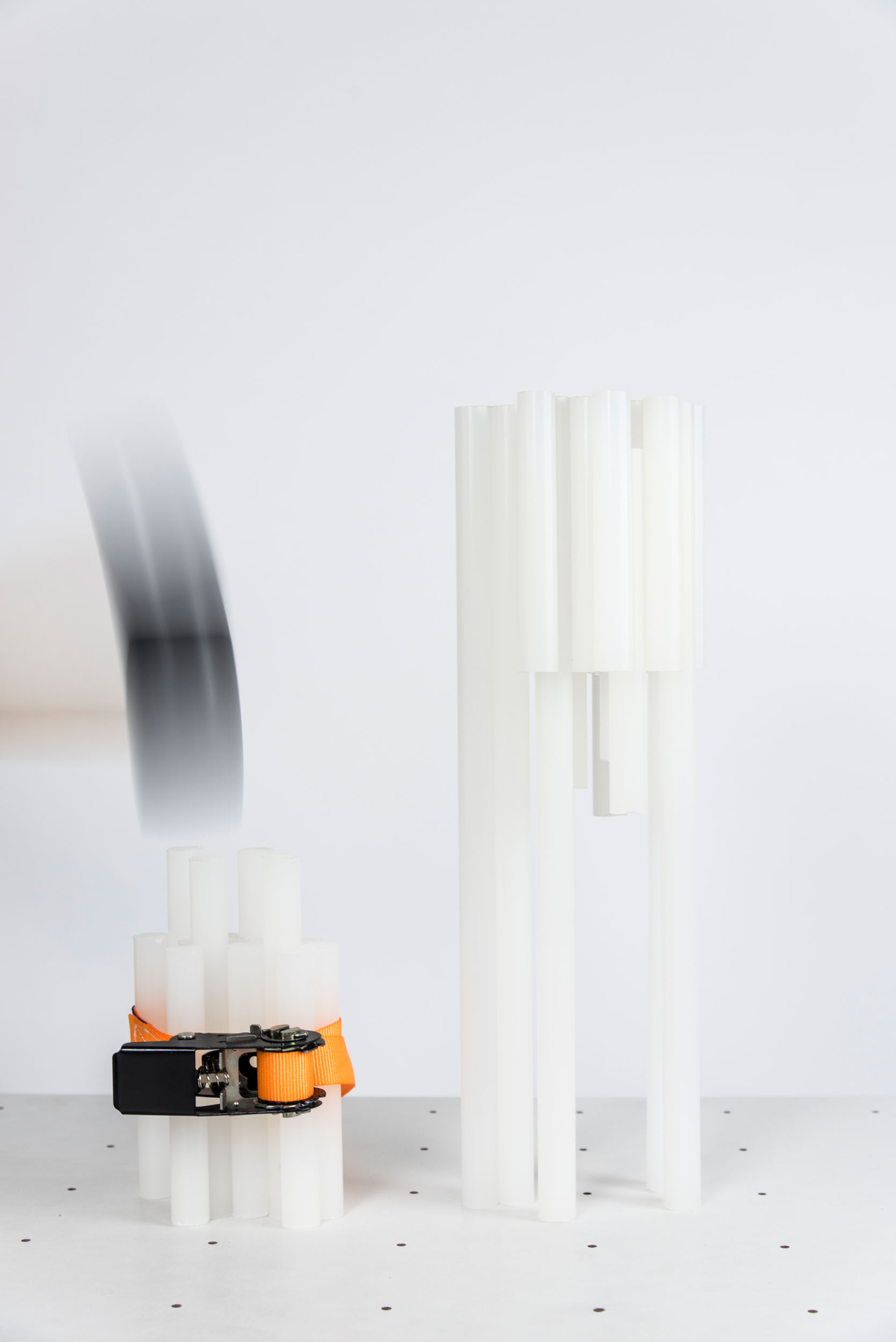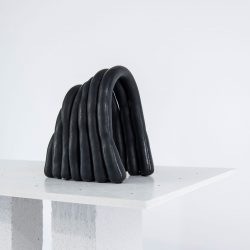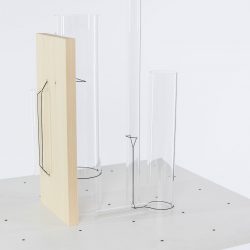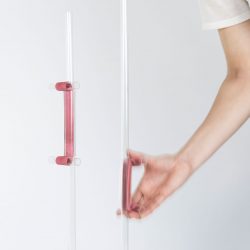Metastabil – Der Zerfall, temporäre Strukturen und ihr Potential
Description
The object-series "Metastable" consists of temporarily-stable objects. The work shows the potential of metastability and looks different at the negatively connotated instability in constructions. The objects deal with the topics "designed particles", "natural-aggregates", "breaking-points", "reset-buttons" and "minimally-invasive". These design approaches are examined in detail in chapters of the written work.What is the Topic?
A metastable design, which is based on a possible disintegration of designed things, suggests (in)capable future options as to how we could encounter anthropocene questions at a material level. It questions the conventional division into stable and unstable structures and shows the potential of dealing with this dichotomy. It tries to counteract the accumulation of things that sooner or later stand in our way. The objects shown disintegrate into their constituent parts by the smallest possible interventions into different connecting structures.
Why does it look like this?
All objects consist of repeating elements. The geometry of the individual elements allows different types of stability for each object. The overall appearance of an object can only be controlled to a certain degree, since the exact arrangement of the elements is random. Under various influences, such as gravity or interaction with the objects, the formations change. The fine line between stability and instability can be seen more by some objects and less by others.
What is special?
The different reversible connections between the individual elements give the objects a self-organizing potential. This "self-will" of the designed objects shows how design concepts of "decomposability" and "reparability" become superfluous when metastability changes the way products are handled.
A metastable design shifts the focus of constructing objects towards an equal deconstruction.
Thus Objekt01 disintegrates over several hours, because the interlocking of the "designed particles" are released by gravity.
Object02 is initially stable and can be loaded in one direction, since the individual elements are welded together with a targeted hammer blow. However, if it is loaded perpendicular to the welding direction, the elements break apart at the "predetermined breaking points".
In Object03, "natural aggregates" are reversibly bound in membranes and can therefore be flexibly positioned and deformed.
In Object04 and 05, individual elements are connected in such a way that they fall apart through "minimally invasive" interventions.
What is new?
Recycling, sustainability and circularity are common terms in the age of the anthropocene. Instead of making materials biodegradable or products recyclable, the objects on display disintegrate without major external intervention and remain on a material level in such a way that a new object can be produced. A complex deconstruction as well as a complex reprocessing of the raw materials or single elements is not necessary.






